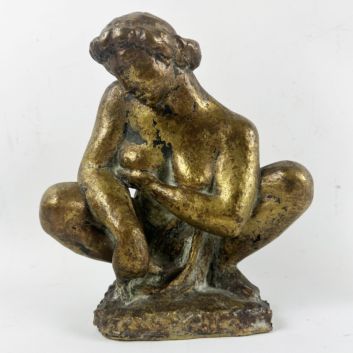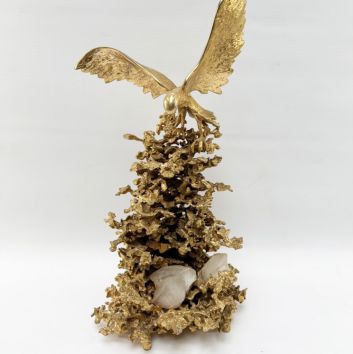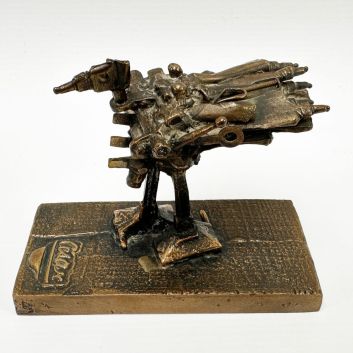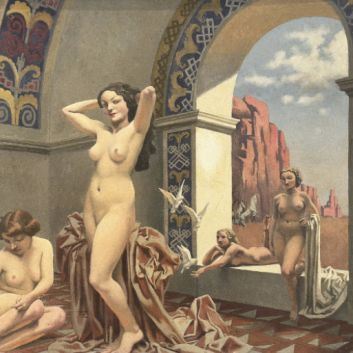Rating and value of sculptures, bronzes and paintings by Paule Bisman
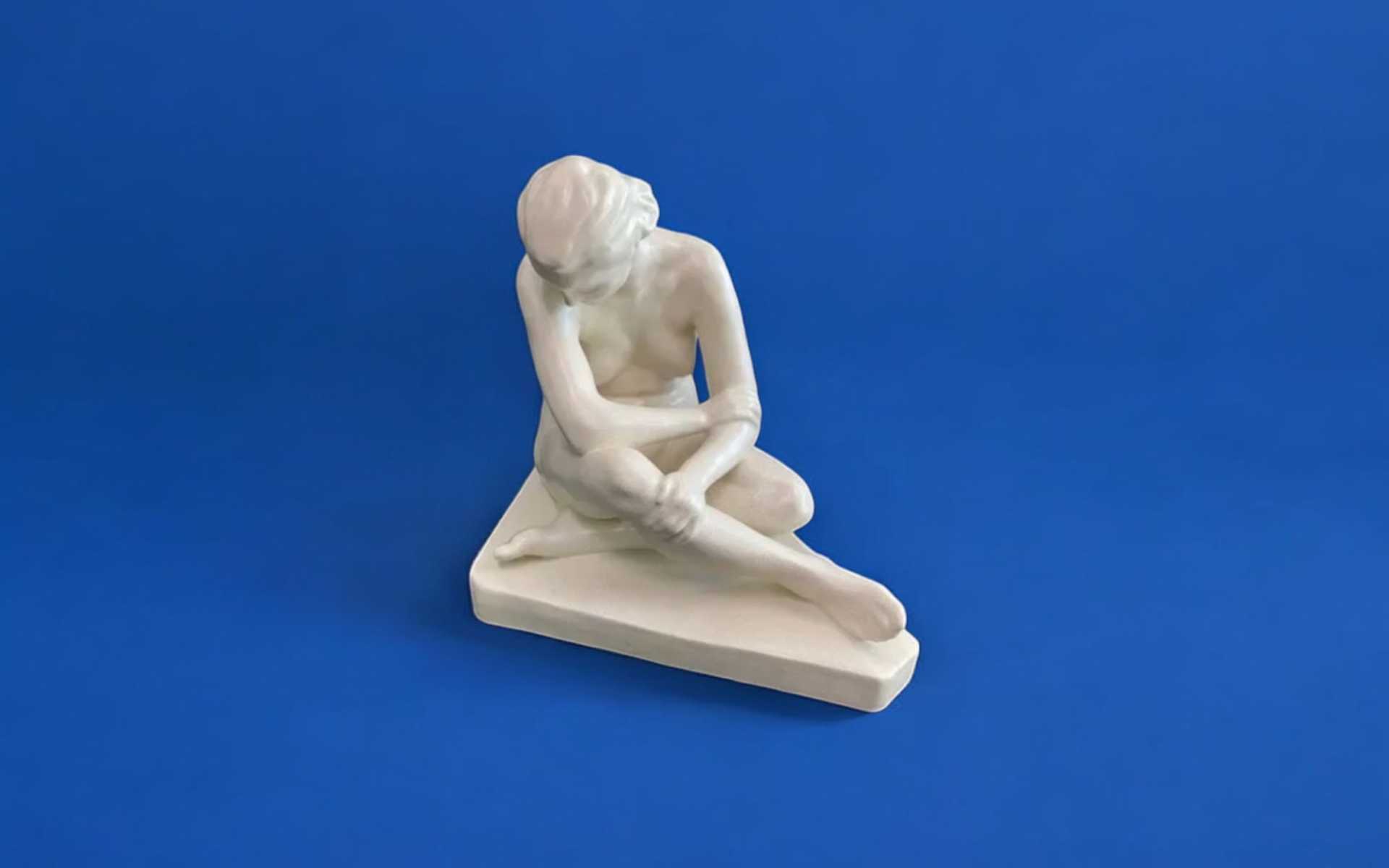
If you own a work by or by the artist Paule Bisman, and would like to know its value, our state-approved experts and auctioneers will be happy to offer you their appraisal services.
Our specialists will carry out a free appraisal of your work, and provide you with a precise estimate of its current market value.
Then, if you want to sell your work, we'll point you in the right direction to get the best possible price for it.
Rating and value of works by Paule Bisman
French artist Paule Bisman works mainly in bronze. Lately, her stock has been rising on the art market. Her works are sold for between €50 and €4,000 on the auction market, a substantial delta but one that speaks volumes about the value that can be attributed to the artist's work.
A bronze sculpture, Naïade, recently sold for €4,000, whereas its estimate was between €4,000 and €8,000.
Order of value from a simple work to the most prestigious
Technique used | Results |
|---|---|
Drawing | From €50 to €300 |
Paint | From €60 to €1,000 |
Bronze | From €40 to €4,000 |
Response in less than 24h
Artist Paule Bisman's style and technique
Paule Bisman is a French artist who works mainly in bronze. Her sculptures are characterized by bronze busts and impressionist paintings.
She has produced some porcelain and ceramics, but is best known and sought after by collectors for her bronzes. The artist works mainly with human subjects.
There are many female figures in his work, but also some childlike ones. His chasing technique is very classical, with no clean lines like those of François Pompon or Yves Klein, for example.
Little known for various reasons - her output is not very large and her works are quite rare on the auction market.
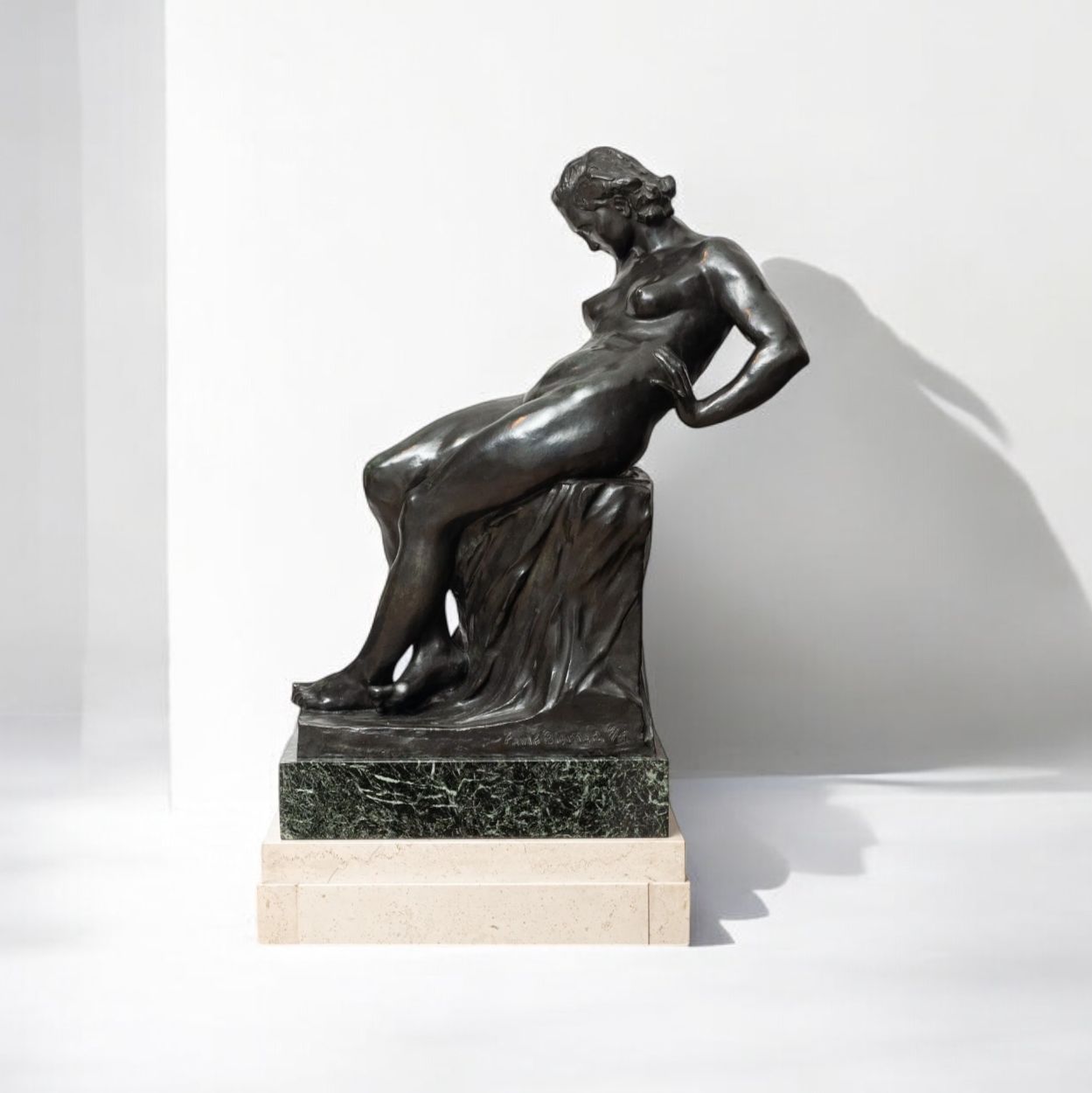
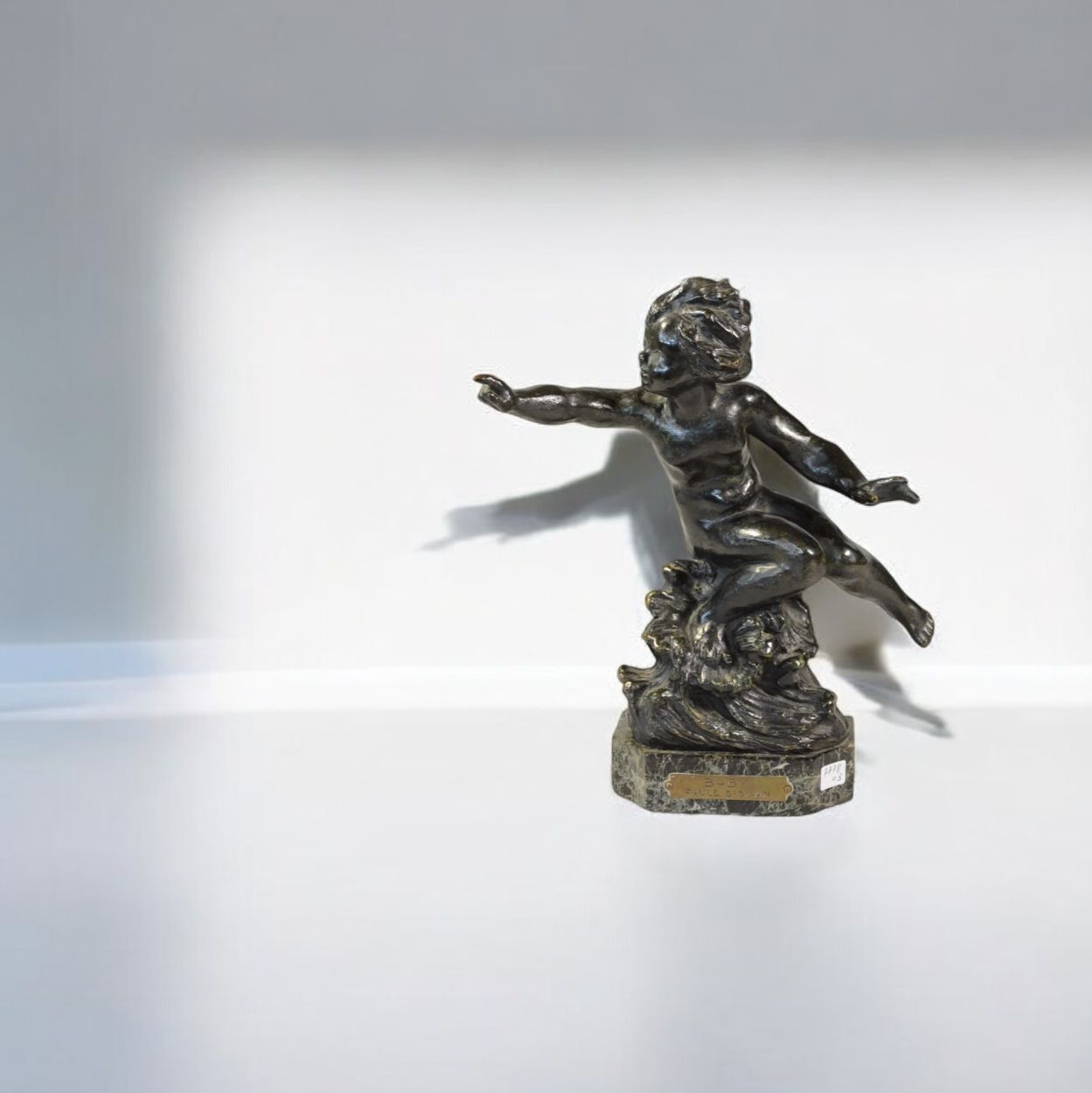
Paule Bisman's career
Paule Bisman (1897 - 1973) was a 20th-century Belgian painter and sculptor.
She trained at the Nemur middle school, where she first learned landscape painting at the Académie des Beaux-Arts. In 1919, she entered the Brussels School of Fine Arts, where she studied with Herman Richir, Jean Delville, Victor Rousseau and Paul Du Bois.
She was soon recognized for her work in academic circles, winning four gold medals and the Prix de Rome, the highest distinction for an artist.
After completing her studies, the young artist traveled to Paris in France, and to Amsterdam and The Hague in the Netherlands.
Today, some of her paintings are sold at auction, but she is best known as a sculptor. Throughout her career, she alternated between the two mediums, giving her a more complete approach to her creations.
Above all, she is inspired by the painters of her native country, particularly those of the 19th century. Her work is exhibited throughout Belgium and in France, where buyers still appreciate her work today.
Bronze in the 20th century
Bronze, a material with ancient roots, underwent a veritable revival in the 20th century, lending itself flexibly to the many artistic explorations of the time.
This noble metal, appreciated for its durability and ability to capture light, is becoming a preferred medium for sculptors seeking to combine tradition and modernity.
Bronze, with its unique texture and patina, lends each work unequalled depth and richness, making it the medium of choice for expressing nuance and emotion.
At the turn of the century, sculptors influenced by the Art Nouveau and Art Deco movements, such as Antoine Bourdelle and Aristide Maillol, exploited the fluidity of bronze to create works where every curve seems to vibrate with life.
Bourdelle, for example, relies on the robustness of bronze to give his figures an impressive monumentality, while Maillol favors the softness of female forms, where bronze captures an almost tangible warmth.
Here, the material becomes not just a support, but an integral part of the emotion conveyed by the work.
The 1920s and 1930s saw bronze flourish in the hands of the modernists. Pablo Picasso and Diego Giacomettiamong others, appropriated this metal to push back the boundaries of traditional sculpture.
With his elongated figures, Giacometti uses bronze to explore the fragility of human existence, each sculpture seeming to defy the laws of matter while remaining firmly rooted in reality.
Paule Bisman, a lesser-known but equally remarkable sculptor, brought her own vision of bronze to this period. She uses metal to capture animal scenes, as well as portraits imbued with softness and lightness.
His sculptures of small animals, created with admirable finesse and precision, show how bronze, often associated with strength and power, can also evoke fragility and gentleness.
Bisman succeeds in making bronze an intimate material, capable of conveying the most subtle details, from a bird's feathers to a rabbit's fur.
The post-war period pushed experimentation even further. Germaine Richier and Césarfor example, explored new textures, transforming bronze into a raw, almost savage material.
Richier's tormented bronze figures reflect the anguish of the time, while César's compressions play on the plasticity of metal, bending and twisting it into a pure expression of creative energy.
Bronze thus spans the 20th century, adapting to every artistic movement, from the abstract to the figurative.
Artists such as Henry Moore and Alexander Calder have exploited his ability to translate organic or geometric forms, creating works that dialogue with the surrounding space.
Finally, bronze in the 20th century embodies a perfect balance between tradition and innovation. It lends itself to all manner of audacity, while remaining rooted in ancestral know-how, offering sculptors an infinite playground in which to express their vision of the world.

Focus on Paule Bisman's self-portrait at the King's House
This painting by Paule Bisman, a self-portrait inspired by the Flemish painters of the 19th century, reveals an intimate dialogue between the artist and her artistic heritage. At first glance, this portrait captivates with its apparent simplicity and the softness that emanates from the artist's face.
The dark background, typical of the Flemish masters, highlights the luminosity of the complexion and the subtleties of the shadows, reinforcing the impression of depth and intensity.
The influence of Flemish painters can be clearly seen in the mastery of light and the delicacy of detail.
The artist's brown curls are treated with meticulous precision, each strand seeming to catch a sliver of light, in the manner of those ancient portraits where every detail is a celebration of the real.
Bisman's slightly cornered gaze expresses a quiet, almost mischievous confidence, while inviting the observer into a silent dialogue. There's a glint of defiance and introspection in his eyes, a window onto his inner world.
The choice of chromatic palette, dominated by warm, earthy hues, also evokes Flemish influences. Touches of red and ochre, blending into the brown of the background, create a soothing yet vibrant chromatic harmony that enlivens the portrait.
The golden necklace around the artist's neck immediately catches the eye, contrasting with the simplicity of the garment. This glittering detail recalls the play of light and subtle richness present in Flemish works, where every accessory has a meaning, a story to tell.
Paule Bisman's self-portrait is more than just a technical study. It embodies a form of artistic declaration, in which the artist places herself in a line of masters while asserting her own voice.
Bisman's gentle yet assertive attitude reveals a strong personality, aware of his talent but humble in his approach.
Here, she presents herself not only as an heir to the Flemish tradition, but also as a creator who appropriates this heritage to create something personal and contemporary.
Ultimately, this painting is a work that brings together past and present, where tradition meets modernity. Paule Bisman demonstrates great technical mastery while infusing it with an emotional and introspective dimension.
This self-portrait is thus much more than a simple physical representation: it is an exploration of the artist's identity, his link with the past and his place in the art world.
Paule Bisman's imprint on her period
Paule Bisman was a well-known and sought-after artist during her lifetime, selling works at prices high enough to make a living from the various commissions she received. Today, her value is stable on the auction market.
Although little known today by the general public, his works are very successful on the art market, his sculptures and paintings being prized by many collectors.
Recognizing the artist's signature
Paule Bisman often signs her works with her family name in cursive script. Expertise is essential to authenticate your property.

Knowing the value of a work
If you happen to own one of Paule Bisman's works, don't hesitate to ask for a free estimate using the form on our website.
A member of our team of experts and certified auctioneers will contact you promptly to provide you with an estimate of the value of your work, as well as any relevant information about it.
If you're thinking of selling your work of art, our specialists will also be on hand to help you find alternative ways of selling it at the best possible price.
Response in less than 24h
Related topics
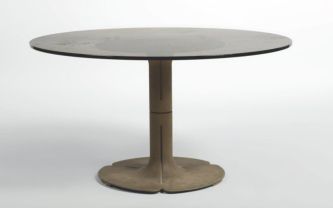
Rating and value of Pierre Paulin's furniture, chairs and tables
Pierre Paulin is one of the 20th century's leading designers, whose furniture is highly prized and sought-after on the auction market.
Read more >
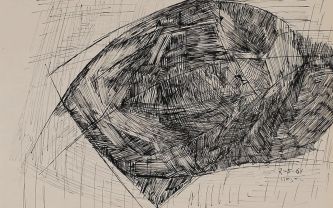
Rating and value of paintings by Ram Kumar
Ram Kumar is a 20th-century Indian abstract artist who produced works in a variety of media that are highly rated and sought-after at auction.
Read more >
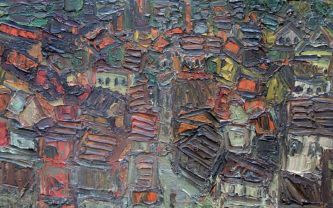
Cote et valeur 2024 des tableaux, dessins, peintures de Andr...
André Cottavoz is a twentieth-century Sanzist artist who has produced works that are highly rated and valued at auction.
Read more >
Secure site, anonymity preserved
State-approved auctioneer and expert
Free, certified estimates
